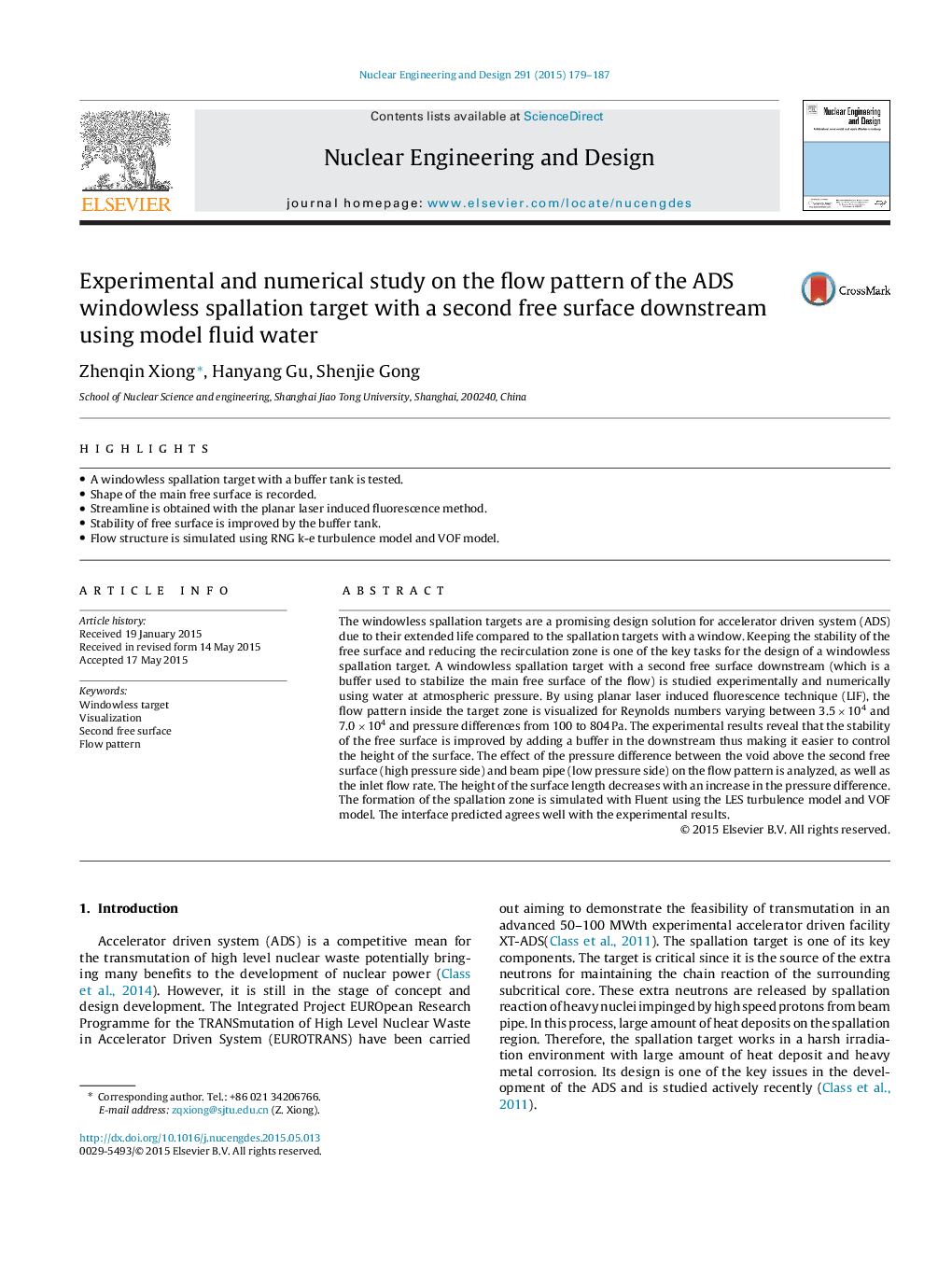| کد مقاله | کد نشریه | سال انتشار | مقاله انگلیسی | نسخه تمام متن |
|---|---|---|---|---|
| 296107 | 511708 | 2015 | 9 صفحه PDF | دانلود رایگان |

• A windowless spallation target with a buffer tank is tested.
• Shape of the main free surface is recorded.
• Streamline is obtained with the planar laser induced fluorescence method.
• Stability of free surface is improved by the buffer tank.
• Flow structure is simulated using RNG k-e turbulence model and VOF model.
The windowless spallation targets are a promising design solution for accelerator driven system (ADS) due to their extended life compared to the spallation targets with a window. Keeping the stability of the free surface and reducing the recirculation zone is one of the key tasks for the design of a windowless spallation target. A windowless spallation target with a second free surface downstream (which is a buffer used to stabilize the main free surface of the flow) is studied experimentally and numerically using water at atmospheric pressure. By using planar laser induced fluorescence technique (LIF), the flow pattern inside the target zone is visualized for Reynolds numbers varying between 3.5 × 104 and 7.0 × 104 and pressure differences from 100 to 804 Pa. The experimental results reveal that the stability of the free surface is improved by adding a buffer in the downstream thus making it easier to control the height of the surface. The effect of the pressure difference between the void above the second free surface (high pressure side) and beam pipe (low pressure side) on the flow pattern is analyzed, as well as the inlet flow rate. The height of the surface length decreases with an increase in the pressure difference. The formation of the spallation zone is simulated with Fluent using the LES turbulence model and VOF model. The interface predicted agrees well with the experimental results.
Journal: Nuclear Engineering and Design - Volume 291, September 2015, Pages 179–187